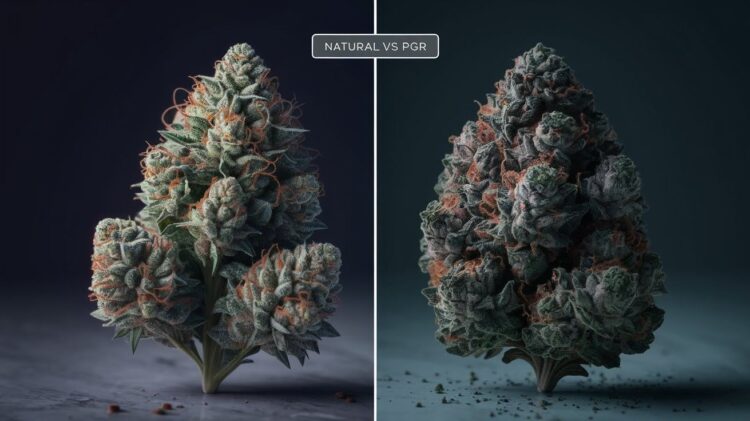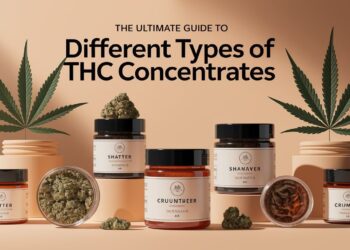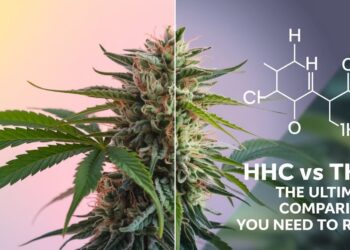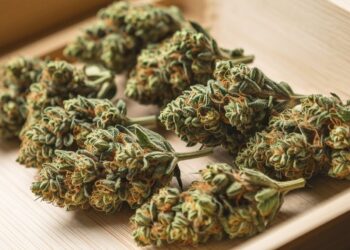You’ve probably heard whispers about PGR weed in cannabis circles. Maybe you’re even wondering if that dense, rock-hard bud you bought is natural or chemically enhanced.
Here’s the truth: Plant Growth Regulators (PGRs) are synthetic chemicals used to make buds look bigger and denser. But while they might boost appearance, they can be harmful to your health. The problem? Most consumers can’t easily tell the difference between natural and PGR-treated cannabis.
This article will show you exactly how to spot PGR weed before you buy or smoke it. You’ll learn what PGRs are, why some growers use them, and the clear warning signs to watch for.
When it comes to your health and your money, knowledge is power. We’ve researched thoroughly and spoken to expert growers to bring you reliable, easy-to-follow tips.
By the end of this guide, you’ll know how to identify PGR cannabis with confidence and protect yourself from low-quality, potentially unsafe products.
Let’s get started.
Understanding PGR Weed: The Basics
Plant Growth Regulators manipulate cannabis development with synthetic chemicals, creating dense buds that sacrifice quality and pose serious health risks.
What Does PGR Stand For?
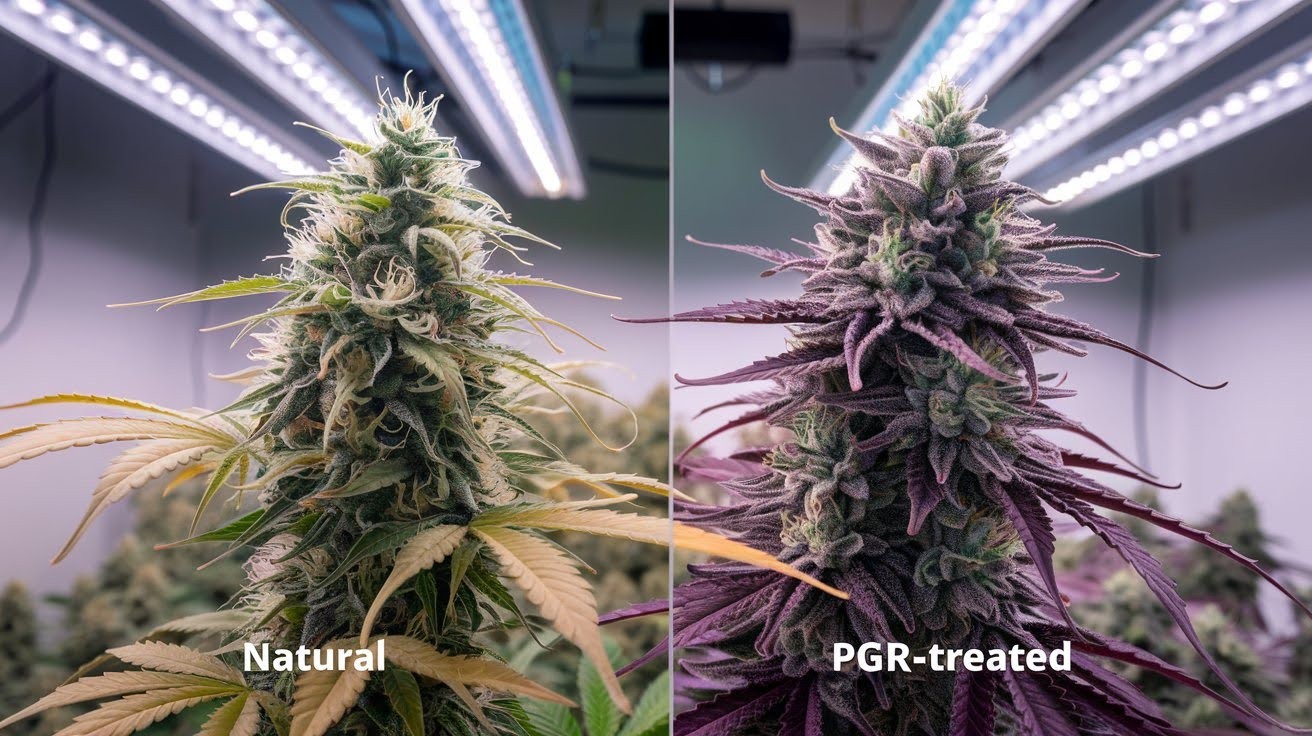
PGR means Plant Growth Regulators. These are chemicals that control how plants grow and develop. Think of PGRs as plant controllers. They mess with the natural signals that tell a plant when to grow, flower, or stop growing.
Your cannabis plant naturally produces hormones to regulate its growth cycles. Here’s where it gets tricky: Some PGRs are natural compounds that plants already make. Others are synthetic chemicals created in labs. The synthetic ones are the problem.
Most commercial PGRs used on cannabis are artificial chemicals like Paclobutrazol, Daminozide, and Chlormequat Chloride. These aren’t found in nature.
How PGRs Impact Cannabis Plants?
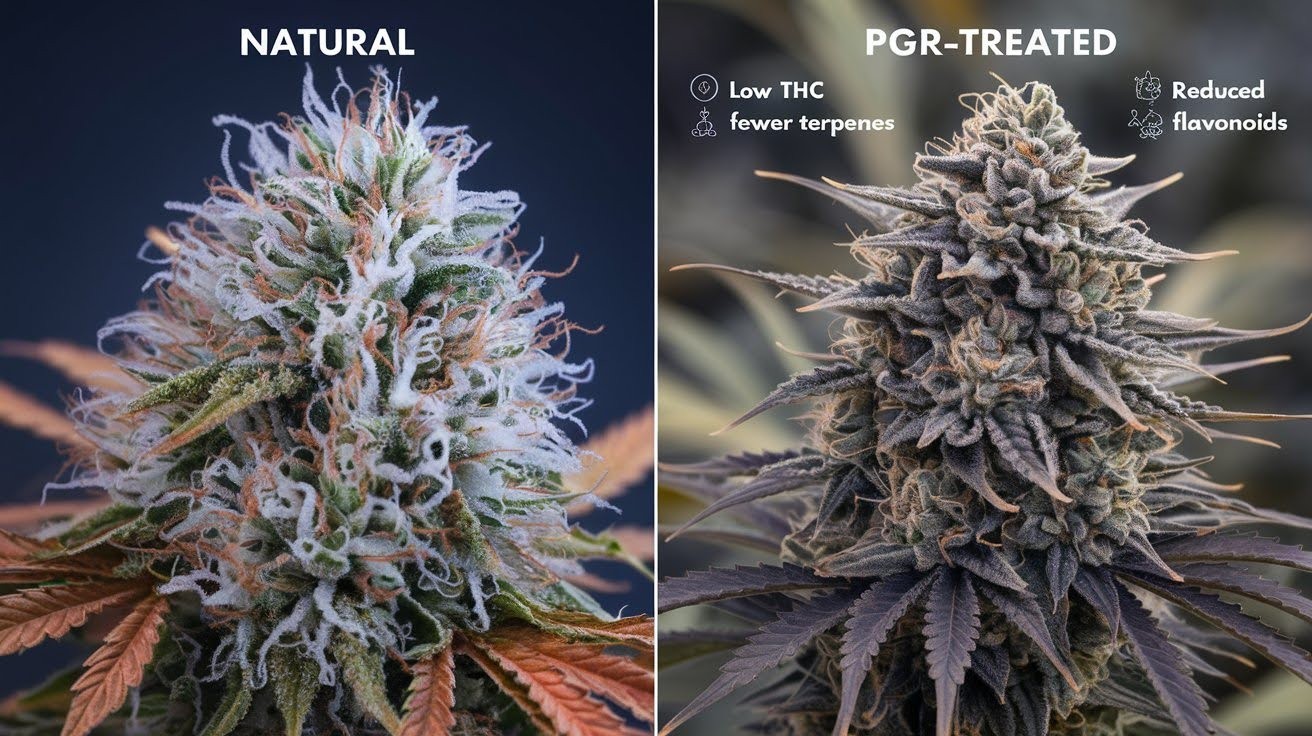
PGRs force cannabis plants to grow unnaturally dense buds. They do this by blocking certain plant hormones. The results look impressive, but come with serious downsides:
Your plant produces fewer trichomes (those crystal-like structures containing THC and CBD). This means lower cannabinoid levels despite the dense appearance. Terpene production drops significantly. Terpenes give cannabis its smell, taste, and therapeutic effects.
Flavonoid development suffers too. These compounds contribute to flavor and potential health benefits. Why do growers use them? Simple economics. PGR buds appear denser and weigh more, resulting in higher profits per plant.
Common Synthetic PGRs Used in Cannabis Cultivation
These synthetic chemicals create artificially dense cannabis buds while compromising your health. Learn about the three most dangerous PGRs.
Paclobutrazol
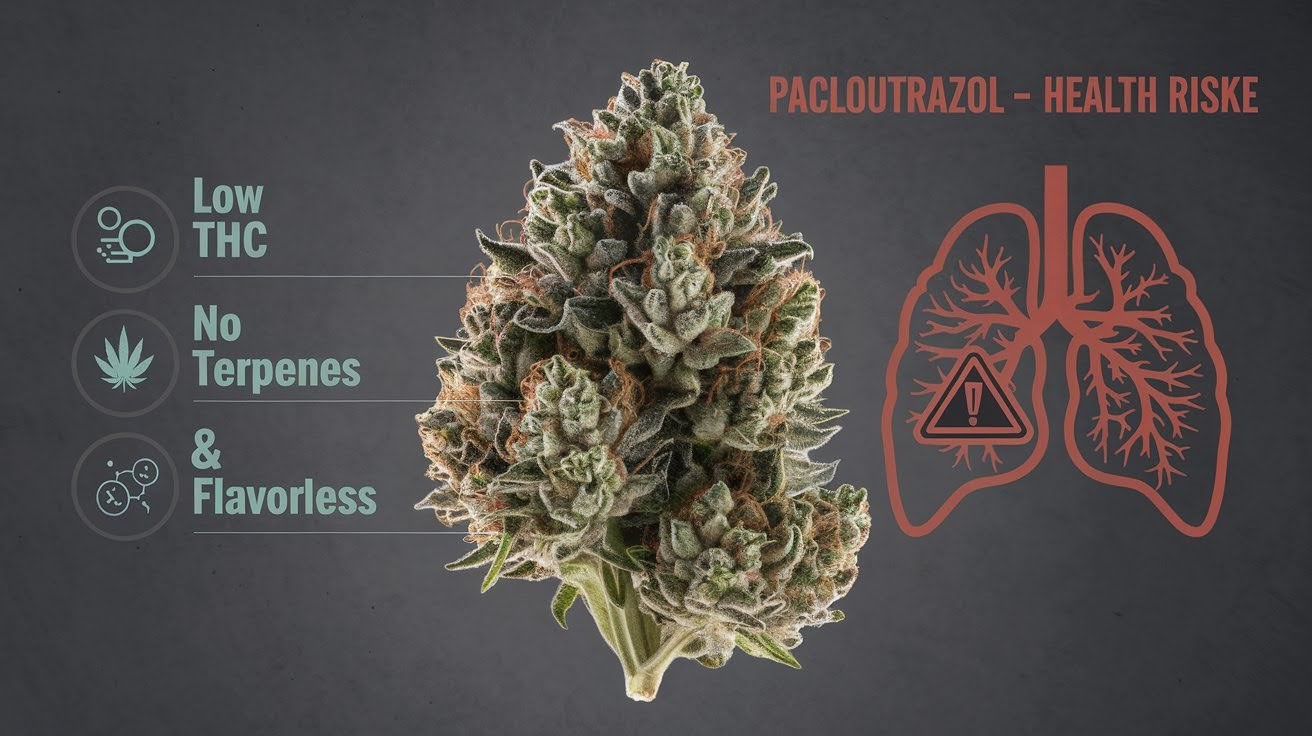
Paclobutrazol is the most common PGR you’ll encounter in cannabis. It works by preventing plant cells from elongating, which creates those rock-hard, dense buds. But here’s what you lose: Your THC levels drop because the plant can’t develop properly.
Terpenes disappear too, leaving you with flavorless buds. The health risks are serious. When you smoke Paclobutrazol-treated cannabis, it breaks down into nitrosamines. These are the same cancer-causing compounds found in cigarettes.
Studies show it can damage your fertility and harm your liver with regular exposure. Not worth the risk.
Daminozide (Alar)
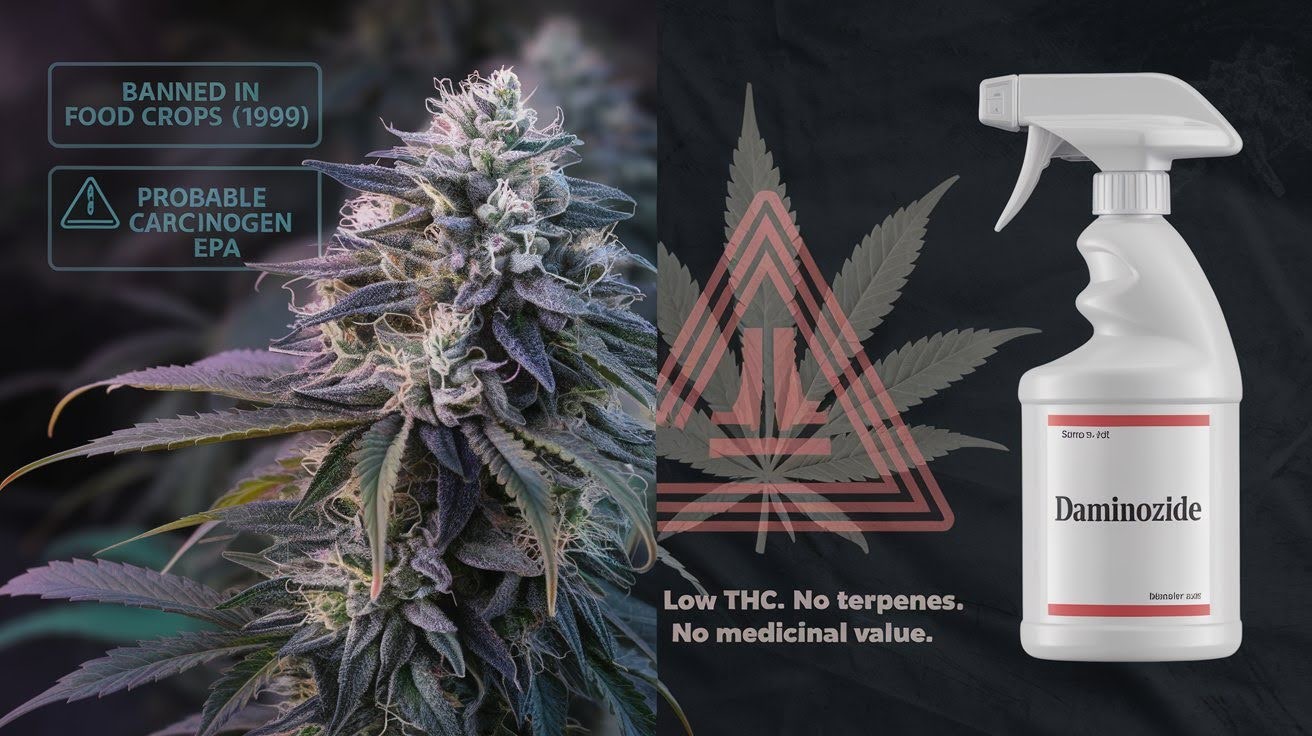
Daminozide forces plants to stop growing leaves and stems. All that energy goes straight to the flowers instead. The EPA calls it a probable carcinogen. That should tell you everything you need to know about its safety.
Here’s the kicker: The government banned Daminozide from food crops back in 1999. Yet some growers still spray it on cannabis.
Your cannabinoid and terpene levels crash when this chemical is used. You get dense buds with little to no medicinal or recreational value.
Chlormequat Chloride
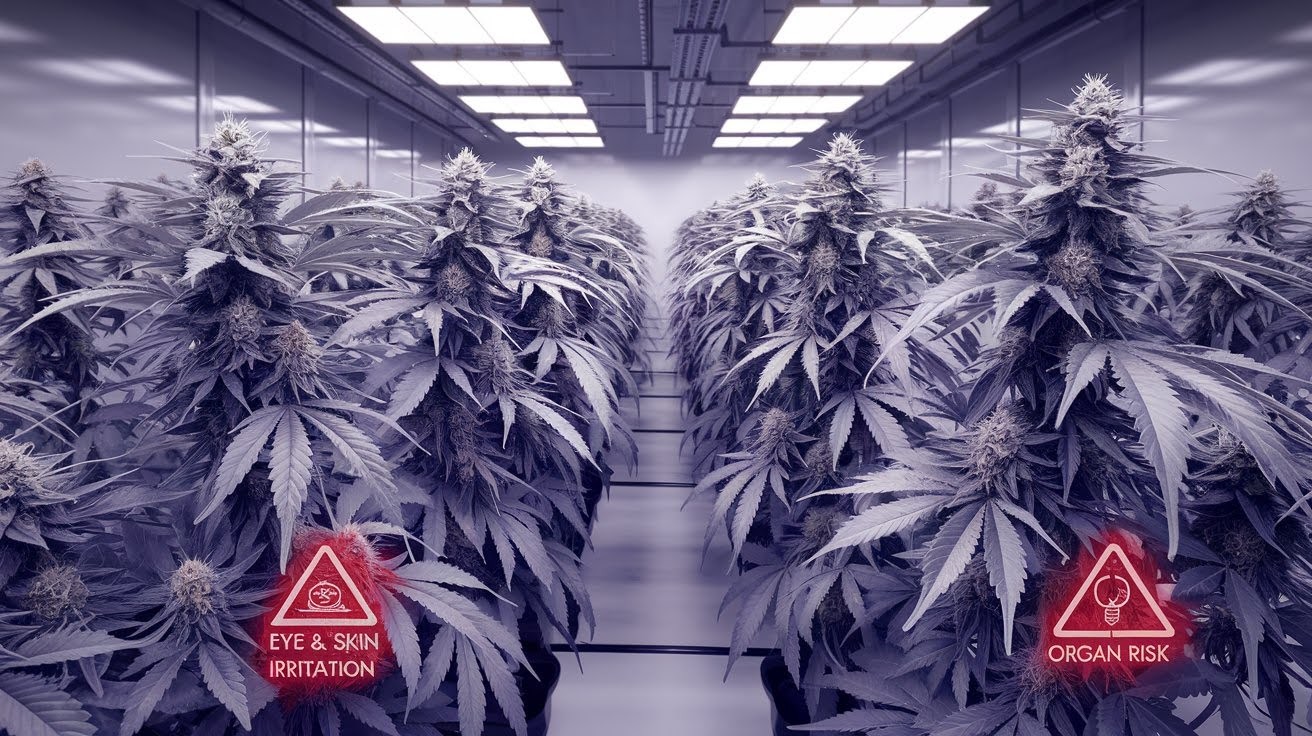
This PGR accelerates plant flowering while maintaining uniform plant size. Growers love it for consistency. It’s less cancer-causing than the other two, but that doesn’t make it safe.
Regular exposure can irritate your skin and eyes. Large amounts over time may damage your organs. Even “safer” PGRs compromise your cannabis experience and health.
How to Identify PGR Weed: Visual and Physical Characteristics?
Your eyes and hands reveal PGR contamination before consumption. These physical signs protect you from chemically treated cannabis buds.
Appearance and Density
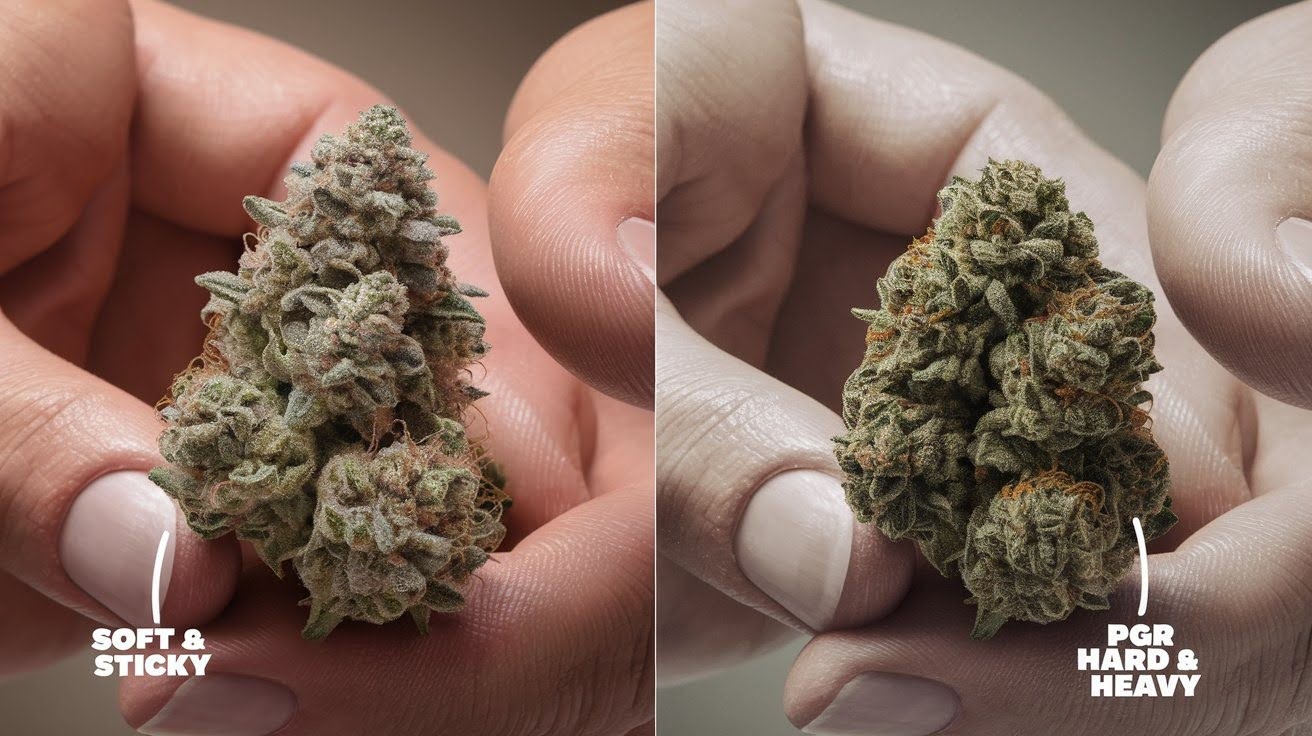
PGR buds feel like rocks. I’m not exaggerating. You can knock them together and hear a solid thud. Natural cannabis has some give when you squeeze it gently. PGR weed doesn’t budge at all.
These buds weigh way more than they should for their size. You’ll notice the difference immediately when you hold them. Look for perfectly round shapes. Nature doesn’t create perfect spheres.
Real cannabis buds have irregular outgrowths and natural variations. Even naturally dense strains, such as Northern Lights or GDP, have some flexibility. PGR buds are uniformly compact, lacking any distinct personality.
Color and Hair Patterns
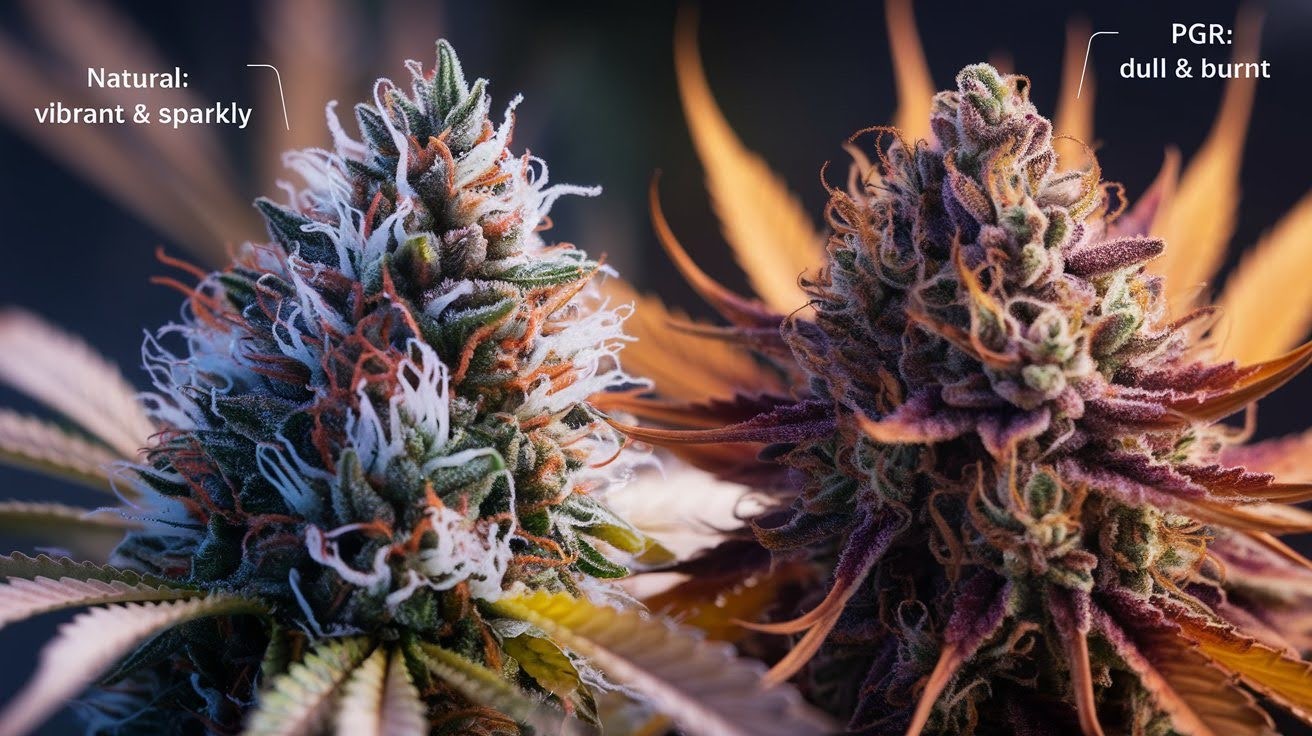
Count the brown hairs. PGR cannabis is covered in excessive brown and red pistils that look burnt. Natural buds show variety in their hair colors. You’ll see white, orange, and some brown mixed.
Check the trichomes closely. PGR weed has yellow-brown crystals instead of the clear or milky white ones you want. The overall color looks dull. Instead of vibrant greens with colorful accents, PGR buds appear muddy orange-brown.
Quality cannabis sparkles under light. PGR weed looks lifeless and muted.
Texture Indicators
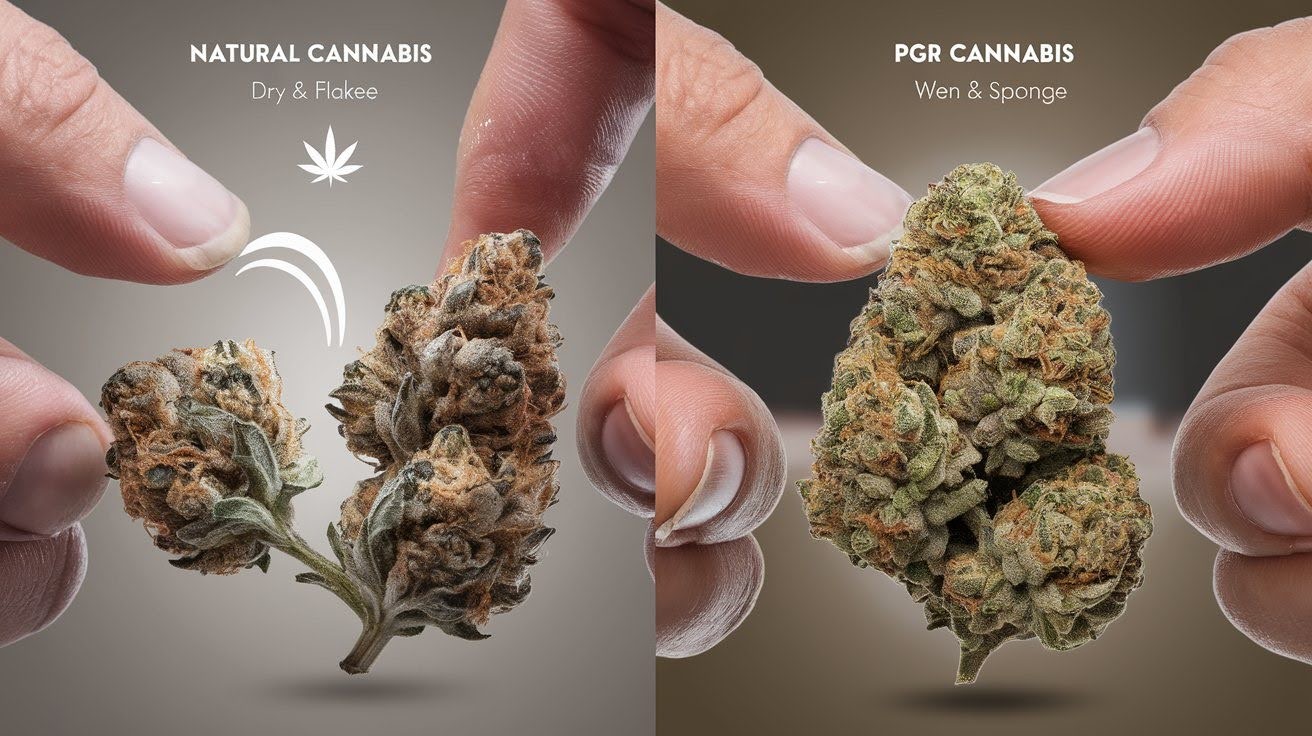
Press the bud gently. PGR cannabis feels spongy and wet, like a damp kitchen sponge. This texture is entirely wrong. Properly dried cannabis should feel dry and slightly crispy on the outside.
Real buds have layers. You can separate the flower clusters with your fingers. PGR buds are solid masses. When you break apart good cannabis, it should crumble somewhat and release aroma.
PGR weed barely breaks apart and smells like nothing. Trust your hands. They’ll tell you more than your eyes sometimes.
Sensory Tests for PGR Detection
Your nose and taste buds act as natural detectors for PGR contamination. These sensory clues protect your health.
Smell and Aroma Tests
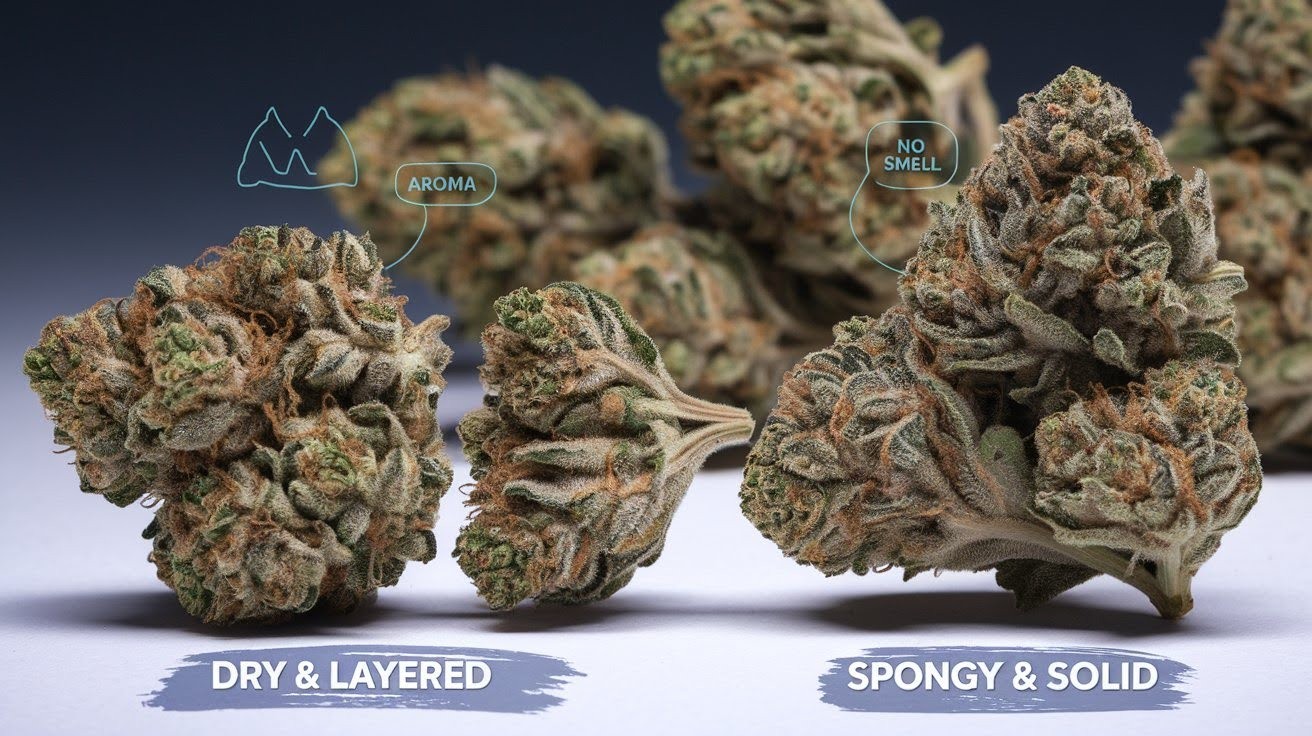
Your nose knows the difference. PGR weed barely smells like anything at all. Break open a natural bud and you’ll get hit with intense, complex aromas. Think pine, citrus, berry, or earthy scents that fill the room.
PGR cannabis? Almost nothing. Perhaps a faint, grassy smell or, worse, a chemical odor that shouldn’t be there.
Here’s a simple test: Hold the bud close to your nose. Natural cannabis should smell strong enough that you don’t need to press it against your nostrils.
Quality buds release more aroma when you squeeze or break them apart. PGR buds stay silent. Real cannabis has personality in its smell. Each strain smells different. PGR weed all smells the same – like very little.
Taste and Smoking Experience
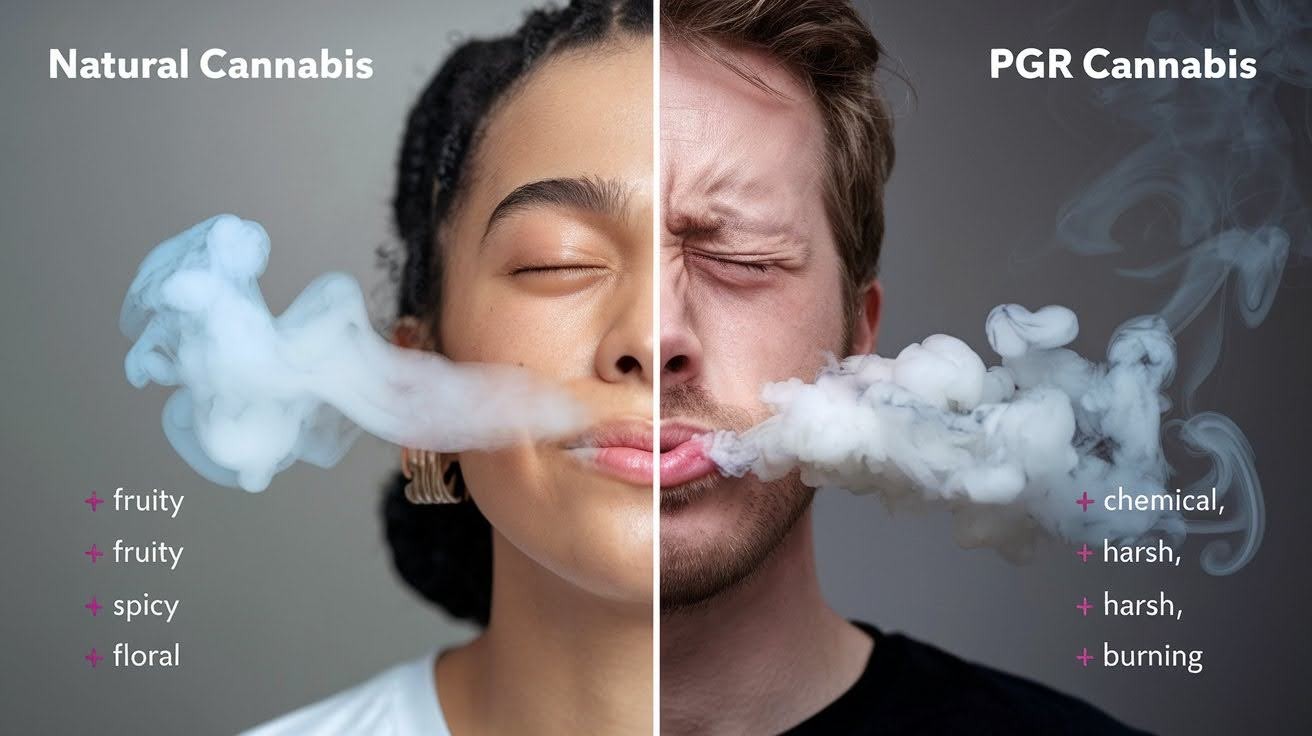
PGR cannabis tastes harsh and chemical-like. Your throat will tell you something’s wrong immediately. Natural cannabis has flavor layers. You may detect notes of fruit, spice, wood, or flowers that complement the aroma.
The high feels different, too. PGR weed might hit fast but fades quickly, leaving you with headaches or feeling sluggish. Your body rejects what isn’t natural. Those harsh coughs and burning sensations are warning signs.
Quality cannabis should taste clean and produce effects that feel balanced and comfortable in your body.
Health Risks and Safety Concerns
PGR chemicals cause immediate reactions and long-term health damage. Understanding these risks helps you make safer cannabis choices.
Immediate Health Effects
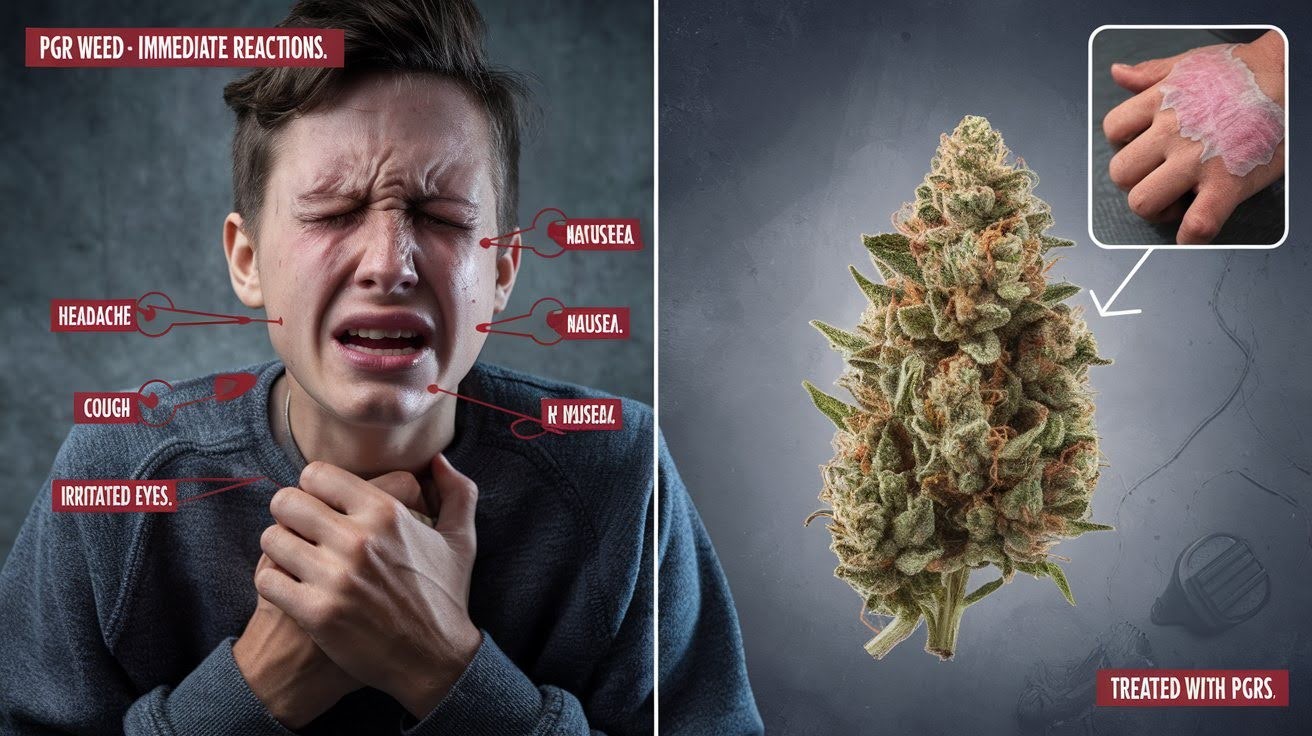
Your body reacts quickly to PGR chemicals. Many people get nausea and headaches within hours of smoking PGR cannabis. Breathing becomes difficult. You might experience chest tightness, coughing fits, or throat irritation that lasts longer than usual.
Skin contact causes problems, too. Handling PGR buds can lead to rashes or eye irritation if you touch your face afterward. The high feels wrong. You get an artificial rush followed by a harsh crash that leaves you feeling worse than before you consumed anything.
Long-term Health Implications
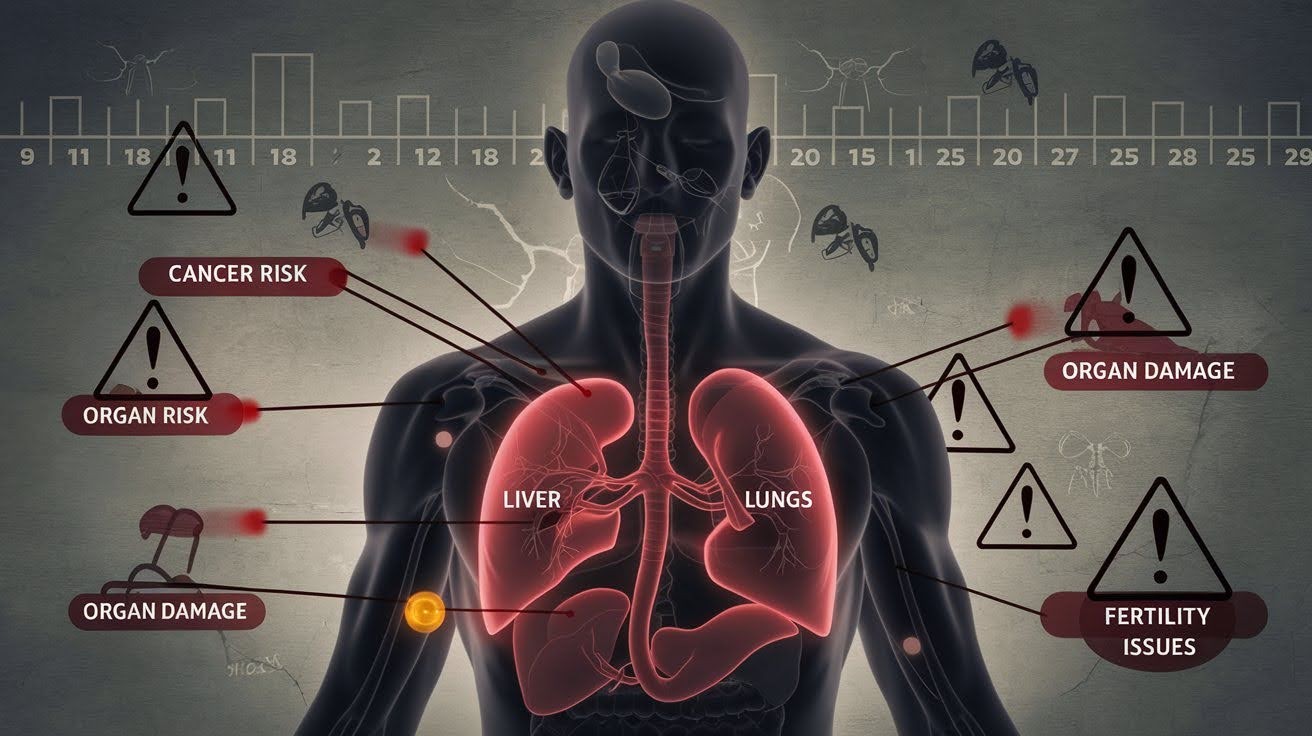
Here’s the scary part: These chemicals build up in your body over time. Regular exposure to PGR cannabis significantly increases your cancer risk.
Your liver and kidneys suffer the most damage. They work overtime trying to filter out these foreign chemicals, which can lead to potential organ failure. Breathing problems get worse with continued use. Chronic bronchitis and other respiratory conditions become common among regular PGR cannabis users.
Fertility takes a significant hit. Both men and women experience reproductive health issues when exposed to these chemicals repeatedly. Your immune system weakens over time. You’ll get sick more often and take longer to recover from illnesses.
The damage accumulates even if you feel fine initially. By the time symptoms appear, significant damage may already have been done.
Why These Chemicals Are Banned
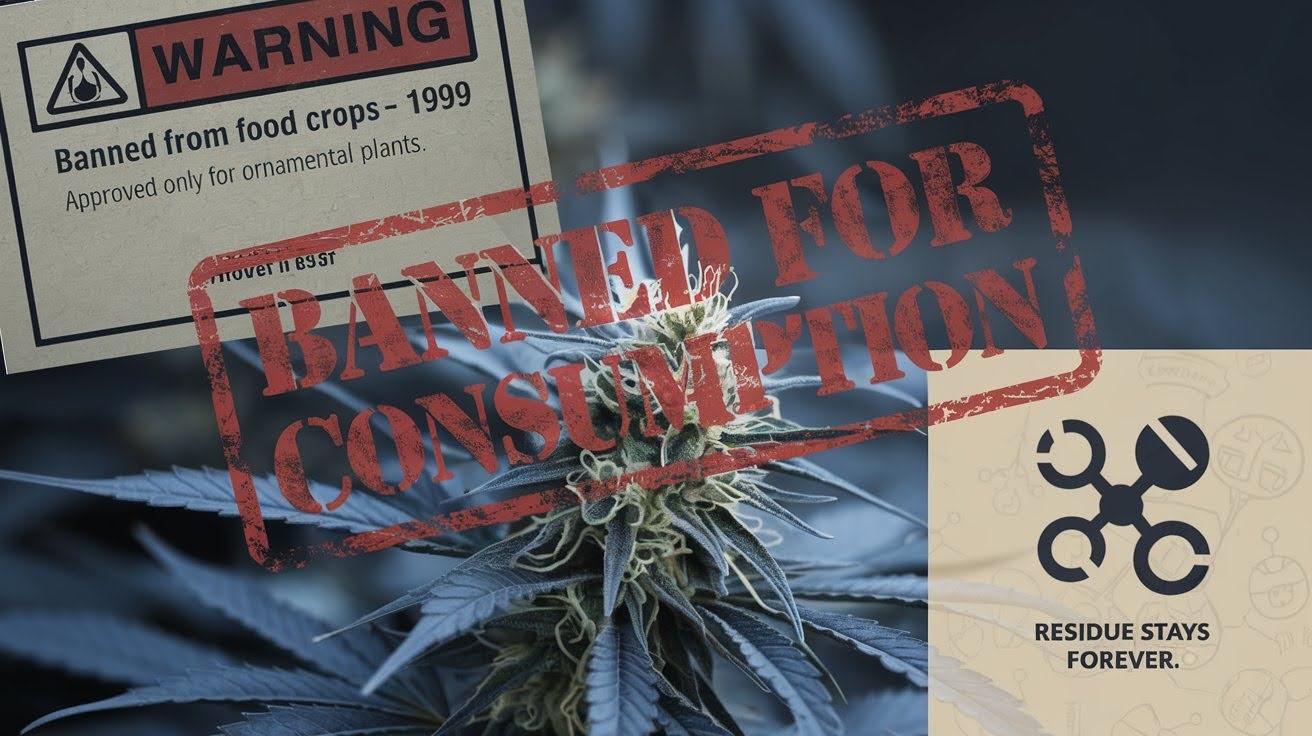
The government banned PGRs from food crops back in 1999 for good reason. They’re not safe for human consumption in any form. These chemicals are only legal for use on ornamental plants, such as flowers, that are not intended for consumption or smoking.
The residue doesn’t wash off. Once applied, these chemicals stay in the plant material permanently. Your safety matters more than dense buds.
PGR Weed vs. Natural Cannabis: Side-by-Side Comparison
Natural cannabis and PGR-treated buds differ dramatically in quality, safety, and effects. This comparison reveals the truth.
Natural Cannabis Characteristics
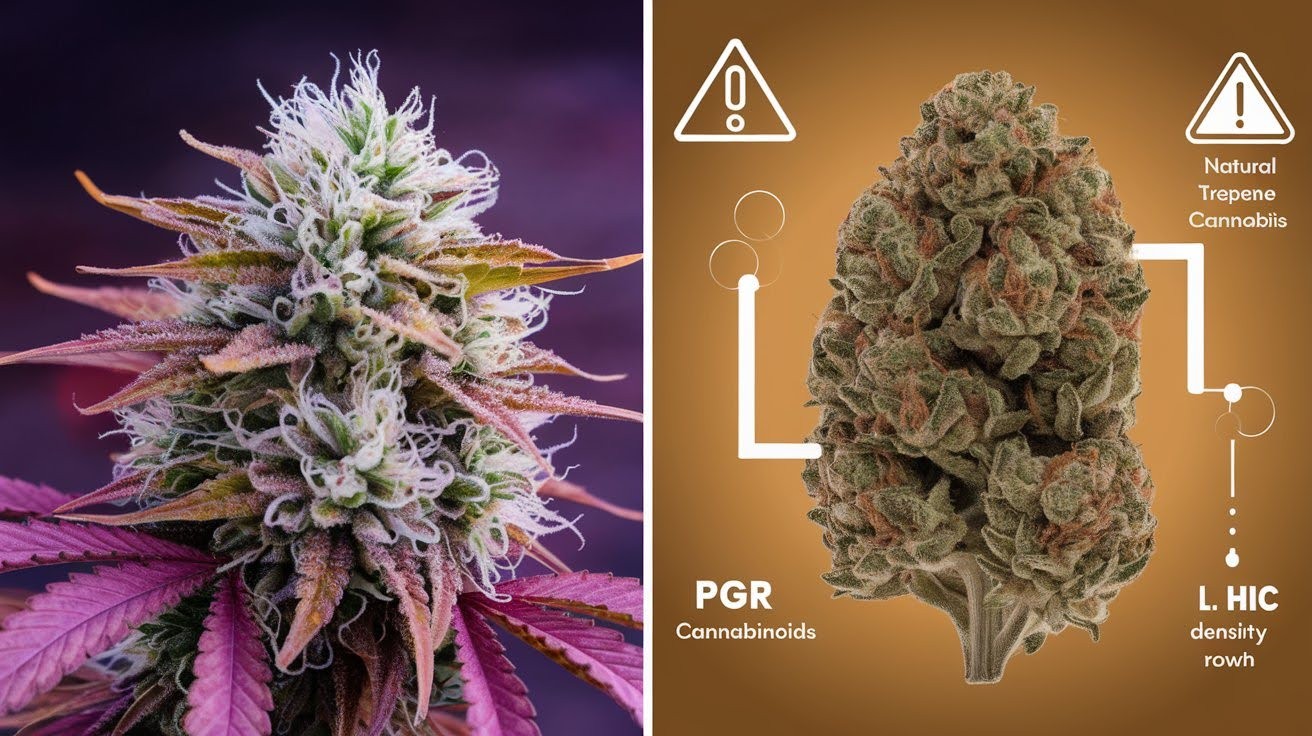
Real cannabis tells a story through its unique scent, flavor, and effects. You get rich terpene profiles that create complex aromas and flavors. The trichomes develop naturally. Those crystal structures contain the cannabinoids and terpenes you want. They look clear to milky white under magnification.
Density varies by genetics. Some strains grow naturally dense while others stay fluffy. This variation is normal and healthy.
You get the full spectrum of beneficial compounds. THC, CBD, minor cannabinoids, and terpenes work together for better effects. The potency is real. Natural cannabis often tests higher for actual cannabinoid content despite looking less impressive.
PGR Cannabis Characteristics
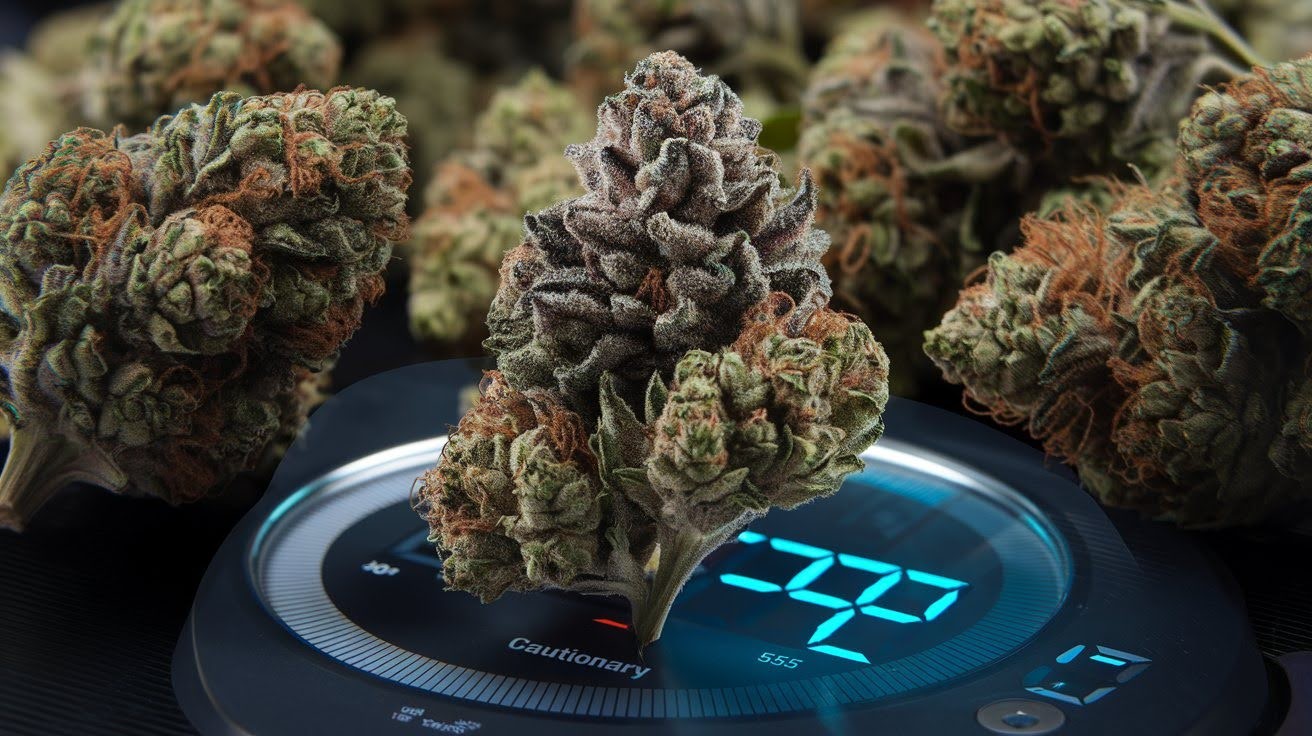
PGR buds fool your eyes but fail everywhere else. They look dense and heavy but deliver weak effects. The cannabinoid content drops significantly. You’re paying premium prices for inferior medicine or recreational effects.
Chemical residues stay in the plant. These harmful compounds don’t disappear when you smoke or vape cannabis. Flavor and aroma disappear. Most PGR cannabis tastes harsh and smells like nothing or chemicals.
It’s all show, no substance. The visual appeal masks the poor quality underneath. Your health pays the price for that artificial density. Natural cannabis respects your body.
Conclusion
Now you know what PGR is in weed and how to spot it before it affects your health. Those rock-hard, odorless buds with excessive brown hairs are clear warning signs of chemical treatment.
Your safety comes first. Trust your senses – if something feels, smells, or looks unnatural, it probably is. Natural cannabis should have aroma, proper texture, and vibrant trichomes. You’re now equipped to make informed decisions about your cannabis purchases.
Remember, quality always beats artificial density. Share this knowledge with fellow cannabis users. The more people who can identify PGR weed, the safer our community becomes. Have you encountered suspicious buds recently?
Drop a comment below and help others learn from your experience. Stay informed, stay healthy, and choose natural cannabis every time.
Frequently Asked Questions
What is PGR in weed?
PGR stands for Plant Growth Regulators – synthetic chemicals used to make cannabis buds unnaturally dense and heavy, but they reduce potency and pose health risks.
How can I tell if my weed has PGR?
Look for rock-hard density, excessive brown hairs, a weak smell, a spongy texture, and a dull appearance. PGR buds feel unnatural and lack aroma.
Is PGR weed dangerous to smoke?
Yes. PGR chemicals can cause cancer, organ damage, respiratory issues, and fertility problems. They’re banned from food crops for safety reasons.
Why do growers use PGR on cannabis?
Growers use PGR to increase profits by making buds appear denser and heavier, even though it reduces quality and cannabinoid content.
Can PGR be removed from cannabis?
No. Once applied, PGR chemicals remain permanently in the plant material and cannot be washed off or removed through any process.

